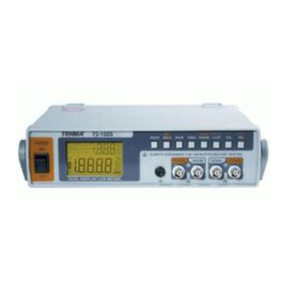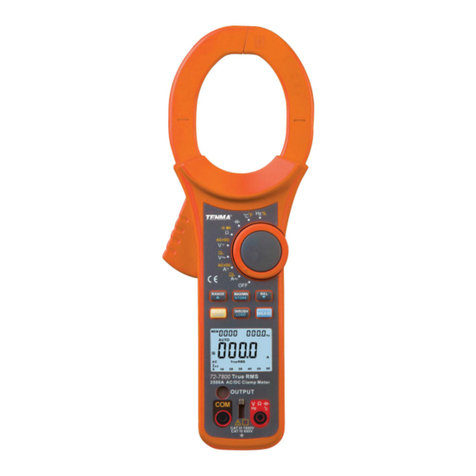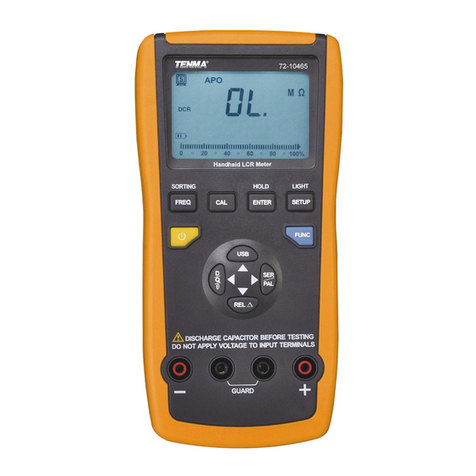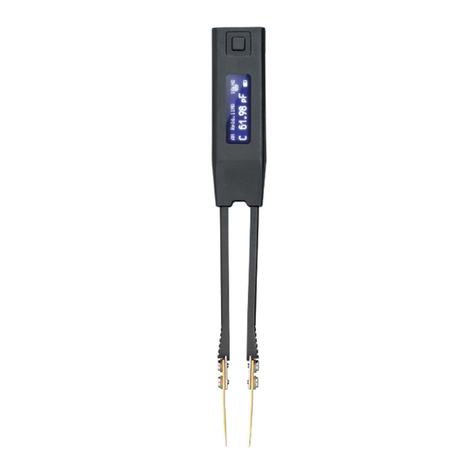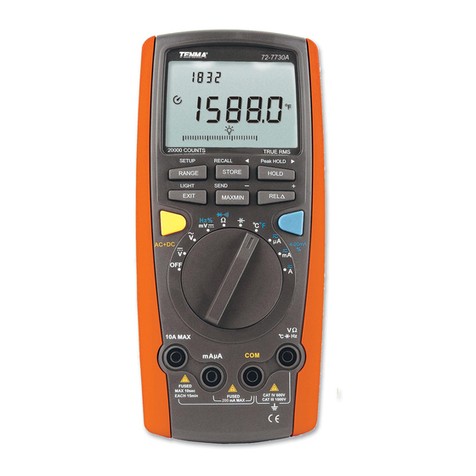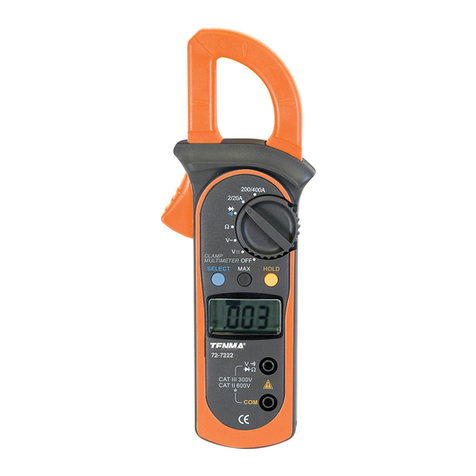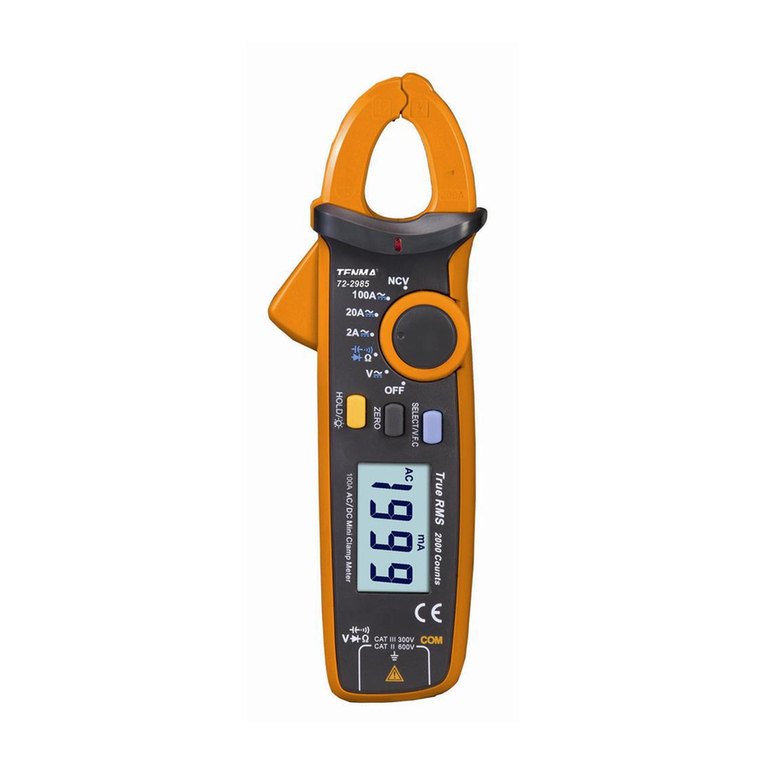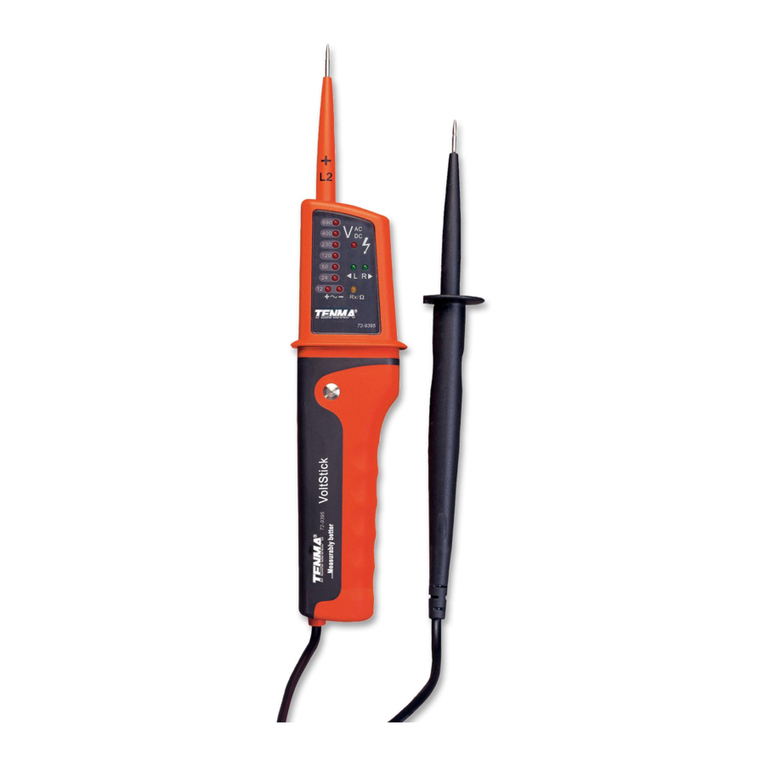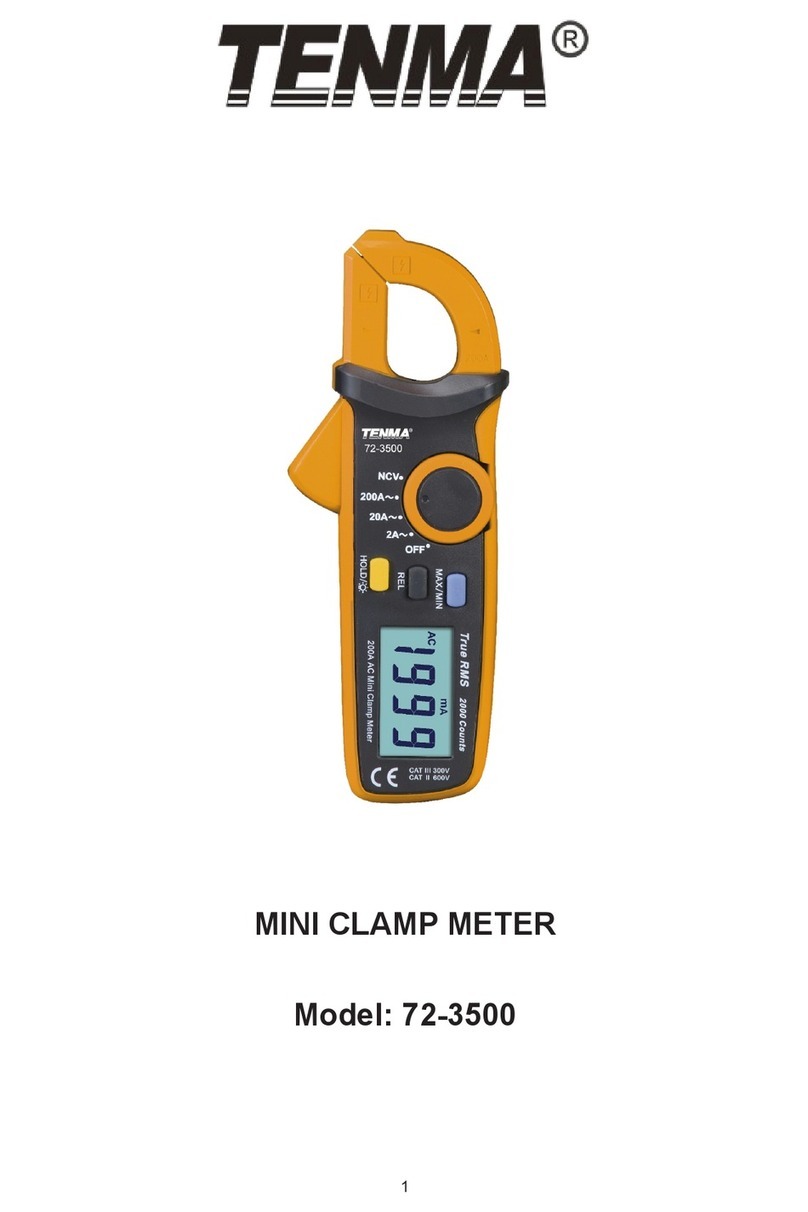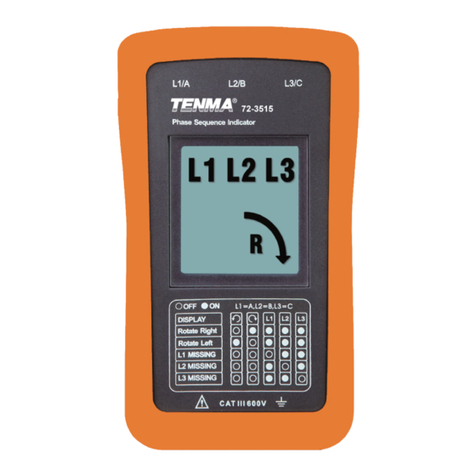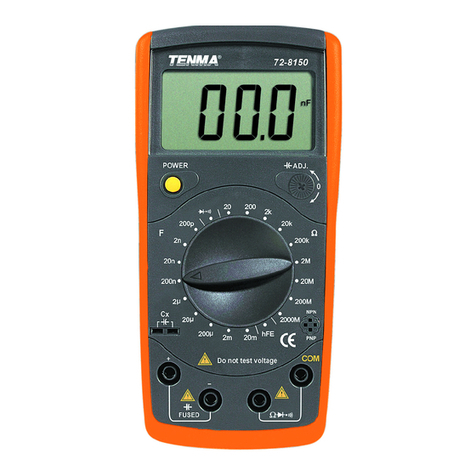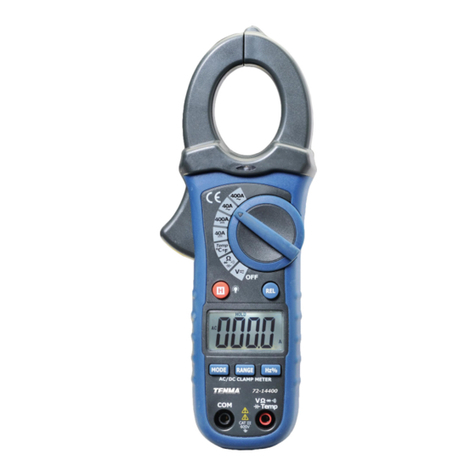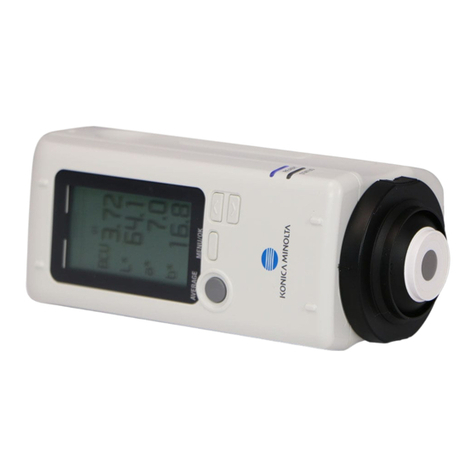
www.element14.com
www.farnell.com
www.newark.com
www.cpc.co.uk
Page <5> V1.008/03/19
Operating Altitude. 7000ft. (2000meters) maximum.
Over voltage Category III 600V
Battery Two “AAA” 1.5V Battery
Auto OFF approx. 30 minutes
Dimensions/Weight 200x66x37mm / 205g
Safety ForindooruseandinaccordancewithOvervoltageCategoryII,PollutionDegree2.Category
II includes local level, appliance, portable equipment, etc., with transient overvoltages less than
Overvoltage Cat. III
Operation
NOTICES: Read and understand all warning and precaution statements listed in the safety section of this operation manual
prior to using this meter. Set the function select switch to the OFF position when the meter is not in use.
AC Current Measurements
WARNING: Ensure that the test leads are disconnected from the meter before making current clamp measurements.
1. Set the Function switch to the 400 or 40A range
2.Iftherangeofthemeasuredisnotknown,selectthehigherrangerstthen
move to the lower range if necessary.
3.Pressthetriggertoopenjaw.Fullyencloseoneconductortobemeasured.
The clamp meter LCD will display the reading.
DC/AC Voltage Measurements
1. Insert the black test lead into the negative COM terminal and the red test lead into the positive V terminal.
2. Set the function switch to the V position.
3. Select AC or DC with the MODE button.
4. Connect the test leads in parallel to the circuit under test.
5. Read the voltage measurement on the LCD display.
Resistance Measurements
1. Insert the black test lead into the negative COM terminal and the red test lead into the positive terminal.
2.SetthefunctionswitchtotheΩ
•))) position.
3. Touch the test probe tips across the circuit or component under test. It is best to disconnect one side of the device under
test so the rest of the circuit will not interfere with the resistance reading.
4. For Resistance tests, read the resistance on the LCD display.
Diode and Continuity Measurements
1. Insert the black test lead banana plug into the negative COM jack and the red test lead banana plug into the positive diode jack.
2. Turn the rotary switch to the Ω
position.
3.PresstheMODE button until “ ” appears in the display.
4. Touch the test probes to the diode under test. Forward voltage will indicate 0.4V to 0.7V. Reverse voltage will indicate “OL”.
Shorted devices will indicate near 0mV and an open device will indicate “OL” in both polarities.
For Continuity tests, if the resistance is < 150, a tone will sound.
